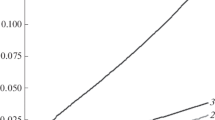Trifluoperazine (TFZ), a phenothiazine drug, penetrates into human erythrocytes and releases oxygen by interaction with hemoglobin. TFZ-induced oxygen release from hyperglycemic erythrocytes isolated from diabetic patients is considerably less compared to that from the cells of normoglycemic individuals. In diabetes mellitus, hemoglobin is significantly glycated by glucose. Non-glycated hemoglobin, HbA0 and its major glycated analog, HbA1c have been separated from the blood samples of diabetic patients. TFZ releases considerable amount of oxygen from HbA0, but very little from HbA1c. Spectrofluorimetric studies reveal that TFZ forms excited state complexes with both HbA0 and HbA1c. Titration of HbA0 with TFZ in a spectrophotometric study exhibits two isosbestic points. Similar experiment with HbA1c causes gradual loss of the Soret peak without appearance of any isosbestic point indicating a possibility of heme loss during interaction, which is also supported by gel filtration experiment and SDS-PAGE experiment followed by heme staining. The results suggest that drug action on hemoglobin is influenced by glycation-induced structural modification of the protein.









Similar content being viewed by others
Abbreviations
- TFZ:
-
trifluoperazine
- CPZ:
-
chlorpromazine
- HbA0 :
-
non-glycated hemoglobin
- HbA1c :
-
glycated hemoglobin
- TBA:
-
thiobarbituric acid
- PBS:
-
phosphate buffered saline
- SDS-PAGE:
-
sodium dodecyl sulfate-polyacrylamide gel electrophoresis
References
Baba Y., Kai M., Kamada T., Setoyama S. and Otsuji S. (1979). Diabetes 28:1138–1140
Bhattacharyya J., Bhattacharyya M., Chakraborti A. S., Chaudhuri U., Poddar R. K. (1998). Int. J. Biol. Macromol. 23: 11–18
Bhattacharyya J., Bhattacharyya M., Chakraborti A. S., Chaudhuri U., Poddar R. K. (1994). Biochem. Pharmacol. 47: 2049–2053
Bhattacharyya J., Bhattacharyya M., Chakraborti A. S., Chaudhuri U., Poddar R. K. (1996). J. Pharm. Pharmacol. 48: 965–977
Biemel K. M., Friedl D. A., Lederer M. O. (2002). J. Biol. Chem. 277:24907–24915
Budavari S., O’Neil M. J., Smith A., Heckelman P. E. (eds) (1989). In the Merck Index, 11th Edn. Merck, USA, p.2184
Chakraborti A. S. (2003). Mol. Cell. Biochem. 253:49–54
Cohen M. P., Wu V. (1994). Meth. Enzymol. 231:65–75
Cordoba J., Robocras M. D., Jones M. N. (1988). Int. J. Biol. Macromol. 10:270–276
Cussimanio B. L., Booth A. A., Todd P., Hudson B. G., Khalifah R. G. (2003). Biophys. Chem. 105:743–755
De Rosa M. C., Sanna M. T., Messana I., Castagnola M., Galtieri A., Tellone E., Scatena R., Bolta M., Giardina B (1998). Biophys. Chem. 72:323–335
Demol N. J., Busker R. W. (1984). Chem. Biol. Interact. 52:79–92
Flukinger R., Winterhalter K. H. (1976). FEBS Lett. 71:356–366
Halliwell B., Gutteridge J. M. C. (1990). Meth. Enzymol. 186:1–88
Huang T. H., Redfield A. G. (1976). J. Biol. Chem. 251:7114–7119
Inouye M., Mio T., Sumino K. (1999) Metabolism 48:205–209
Kapp E. A., Daya S., Whitley C. G. (1990). Biochem. Biophys. Res. Commun. 163:1383–1389
Kar M., Chakraborti A. S. (1999). Ind. J. Exptl. Biol. 37:190–192
Kar M., Chakraborti A. S. (2001). Curr. Sci. 80:770–773
Khoo U. Y., Newman D. J., Miller W. K., Price C. P. (1994). Eur. J. Clin. Chem. Clin. Biochem. 32:435–440
Klatt P., Pfeiffer S., List B. M., Lehner D., Glatter O., Bachinger H. P., Werner R., Schmidt K. (1996). J.Biol.Chem. 271:7336–7342
May & Baker Ltd. (1971). In the Red Book of M & B Medical Products, 9th Edn. Dagenham, England, pp. 67–75
McDonald M. J., Bleichman M., Bunn H. F., Noble R. W. (1979). J. Biol. Chem. 254:702–707
Miller, J. A., Gravalles, E., and Bunn, H. F. (1980). J. Clin. Invest. 65, 896–901.
Panter S. S. (1994). Meth. Enzymol. 231:502–514
Peterson K. P., Pavlovich J. G., Goldstein D., Little R., England J., Peterson C. M. (1998). Clin. Chem. 44: 1951–1958
Rosen P., Nawroth P. P., King G., Moller W., Tritschler H. J., Packer L. (2001). Diabetes Metab. Res. Rev. 17: 189–212
Roy A., Sen S., Chakraborti A. S. (2004). Free Radic. Res. 38:139–146
Sadrzadeh S. M., Graf E., Panter S. S., Hallaway P. E., Eaton J. W. (1984). J. Biol. Chem. 259:14354–14356
Schleicher E. D., Olgemoller B., Wiedenmann E., Gerbitz K. D. (1993). Clin. Chem. 39:625–628
Sen S., Roy A., Chakraborti A. S. (2005). Biophys. Chem. 113:289–298
Sil S., Chakraborti A. S. (2002). Mol. Cell. Biochem. 237:103–110
Sil S., Bose T., Roy D., Chakraborti A. S. (2004). J. Biosci. 29:281–291
Sil S., Kar M., Chakraborti A. S. (1997). J. Photochem. Photobiol. B: Biol. 41:67–72
Stewart J. M., Kilpatric E. S., Cathcart S., Small M., Dominiczac M. H. (1994). Ann. Clin. Biochem. 31:153–159
Svacina S., Hovorka R. and Skrha J. (1990). Comput. Meth. Progr. Biomed. 32:259–263
Takasu N., Komonga I., Asawa T., Nagasawa Y. (1991). Diabetes 40:1141–1145
Turk Z., Misur I., Turk N., Benko B. (1999). Clin. Chem. Lab. Med. 37:813–820
Watala C., Gwozdzinski K., Malek M. (1992). Int. J. Biochem. 24:1295–1302
West J. B. (eds) (1985). In Best and Taylor’s Physiological Basis of Medical Practices. Williams and Wilkins, London, pp. 546–571
Wolffenbuttel B. H., Giordino D., Founds H. W., Bucala R. (1996). Lancet 347:513–515
Acknowledgements
The study was supported by a grant from the University Grants Commission, New Delhi and one of us (T.B) received a research fellowship from the Commission. Thanks are due to Prof. C. K. DasGupta of this Department and Dr. S. Roy, Department of Biochemistry, University of Calcutta for allowing us to use the Hitachi F-3010 spectrofluorimeter and Gilson 5/6 oxygraph machine, respectively. We are thankful to Prof. U. Chaudhuri of this Department for useful comments and suggestions on the manuscript.
Author information
Authors and Affiliations
Corresponding author
Rights and permissions
About this article
Cite this article
Kar, M., Roy, A., Bose, T. et al. Effect of Glycation of Hemoglobin on its Interaction with Trifluoperazine. Protein J 25, 202–211 (2006). https://doi.org/10.1007/s10930-006-9003-x
Published:
Issue Date:
DOI: https://doi.org/10.1007/s10930-006-9003-x




